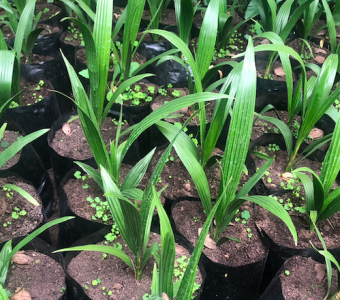


Botanical Name: Phoenix reclinata Jacq.
Common Name: Pheonix Palm, Wild Date Palm
Plant Family: Arecaceae
Origin: Africa
References: Coates Palgrave p.97, Storrs 1 p.7-8,Venter, p.262. S.A. No. 22, Zimb. No. 14
Description: Evergreen palm, multi-stemmed often from the base, the old stems leaning over producing a characteristic appearance. Occurs along river banks, and in low lying open grassland. Leaves tend to be spiky and sharp. Flowers borne in axis of young leaves, and fruit on large drooping bunches.
Features of Particular Interest: Shape, leaves.
Height and Spread: About 3 – 6m but can reach 10m.
Periods of Interest:
Leaf: All year round.
Flowering: August to November.
Fruiting: February to April.
Cultivation
Soil and Moisture: Always occurs near water, usually with the roots in water. Plant in full sun although also thrives in semi shade.
Aspect: Grows well in open sun.
Hardiness: Can withstand light frost, but protect young plants from cold winds.
Maintenance and Pruning: Growth rate is fast if kept watered.
Propagation: From fresh clean seed, pressed into a sandy mixture, with part of the seed sticking out, and keep moist. As soon as first leaf is 50mm long transplant into bags and plant out in situ after one season.
Problems and Drawbacks: Can get big so leave lots of room.
Use and Associated Plants: Fruits are eaten by wild animals, and birds. Leaves are used for making mats and hats. P. reclinata makes a good specimen plant on a lawn. It is also excellent impenetrable screen, with its spiky leaves. Or to fill a large opening in a garden.
